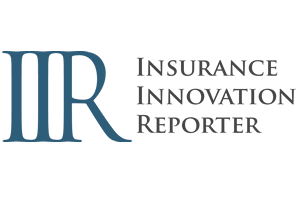By Dan Woods, CEO of Socotra
The insurance industry faces myriad challenges, ranging from a rapidly evolving technology landscape, to minimizing ongoing product maintenance costs, to adapting to changing consumer behaviors and preferences shaped by today’s digital-first world.
Against these growing headwinds, it’s more important than ever that insurers remain competitive and innovate at speed.
The most successful InsurTechs are gaining significant traction by quickly developing convenient and customer-centric products. Carriers are following suit and starting to embrace modern technology as an opportunity to diversify and rapidly bring new products to market.
The insurance market may be ripe for disruption, but actually capitalizing on the opportunity can be difficult. The industry maintains high barriers to entry, heavy regulatory obligations, and is populated with well-established competitors. Survival for carriers depends on their ability to launch new products and services fast, and on budget, while tailoring them to evolving customer demands.
The traditional incumbent approach of spending several years and millions of dollars on product development isn’t viable in today’s fast-paced insurance environment. It’s not only inefficient – it also leaves your business trailing the competition.
Insurers must forge a new path, powered by agile methodology. By maximizing resources and continually iterating toward a best-fit product, an agile approach can be a significant differentiator for insurance innovators. But in insurance, agile is still a relatively new and uncharted concept.
Here are five lessons that both carriers and InsurTechs can use to distinguish themselves from their peers.
1. Go live quickly with a minimum viable product (MVP)
Historically, insurers have taken a rigid waterfall approach to bringing fully developed products to market. Today, you can’t afford to take such a lengthy and expensive route to product development. Instead, you must get live fast with an MVP and start selling policies — because until you have a customer, you know nothing.
Learning moves exponentially faster once a product is live. By viewing the product launch as a starting point in the development journey, not the destination, insurers can test market assumptions by gathering data from real prospects and customers. They can then take what they learn and quickly iterate to develop a more customer-centric product.
Generally, the minimum features required for an MVP are data collection (to capture policyholder information), rating (to determine premiums), underwriting (to assess risk), documents (to support contracts and legal requirements), and payments (to collect premiums and pay out claims).
Not all MVP features need to be fully built and automated. Avoid delaying a launch so that you can build out a function that can just as easily be done in Excel or another manual tool.
2. Be hyper-responsive to customer feedback and needs
Your MVP has reached its Day 1 milestone: selling policies. Now it’s Day 2, and you’ll have a host of fires you’ll need to put out in terms of smoothing processes and meeting customer needs. While an agile approach accelerates your learnings and creates a customer-centric feedback loop for your product, it also demands responsiveness from your team post-launch.
Renewals, for example, are common fast-follow features. Most customers will renew monthly or annually, giving you ample time to build out this feature. Most types of cancellations can also likely wait until day two, unless you have an admitted product like personal auto insurance, where it’s required.
3. Iterating on manual processes is the fastest iteration you’ll ever do
Agile methodologies concentrate on minimizing waste while maximizing results. Many startup leaders mistakenly believe automating as many processes as possible will help them stay lean and save time. However, in certain instances, it makes sense to perform a quick fix instead of automating.
Manual processes aren’t bad. They’re crucial tools to apply the feedback signals received from customers. They enable you to tweak, substitute or eliminate inefficient processes quickly and affordably. In fact, manual processes are the easiest and simplest to iterate on, so avoid prematurely automating a manual process before validating the benefit of doing so.
4. Prioritize like a maniac
You’ve gone live fast, responded to feedback with feature updates, and preserved manual processes to maintain your focus on the most mission-critical objectives.
But your responsibility to protect your scarce resources doesn’t end here. Where you spend your time, talent and capital still determines your survival and growth even as your resources expand. Ruthless prioritization will allow you to continue making product improvements while supporting customer and market demands.
Automating manual processes can help you unlock massive gains in productivity, performance and customer satisfaction. Yet, knowing which processes to replace, and in what sequence, is more complicated than it seems, so make sure you lay out an appropriate prioritization roadmap.
Different products demand different prioritization. For example, claims may surface as a top priority for an auto product, yet it will be a lower priority for a life insurer, which may not receive a claim until months after launch.
5. Choose technology that enables agile methodology
By its very nature, agile methodology requires agile technology. That means using a multi-service architecture that can maximize the agility and impact of lean operations rather than a monolithic incumbent system that prevents a nimble team from adapting to market demands in a timely, cost-effective, and non-disruptive manner.
Multi-service architecture enables you to take advantage of best-of-breed technology to create a dynamic, always-up-to-date platform with flexibility and resilience to change. Consider the iPhone, which delivers an intuitive core operating system and a marketplace of third-party apps that can be seamlessly installed with a few clicks. In much the same way, multi-service architecture can put technology and services at your fingertips without custom coding or downtime for upgrades.
Multi-service platforms allow you to tailor your own platform to meet market demands quickly and easily, reducing implementation time and costs whilst making it simpler to accelerate product launches, test and iterate a live product, and begin raising additional capital.
Keeping Pace With Innovation
The insurance landscape is modernizing rapidly, with innovative new products being launched at remarkable speed. Over time, this trend will only accelerate. The five lessons outlined here will enable insurers to keep up with this rapid pace of innovation. It is key for carriers to stay aware of the changing market and establish plans now to transition to more modern technology, which will ultimately enable them to better serve their customers.
This article was originally published in Carrier Management.








